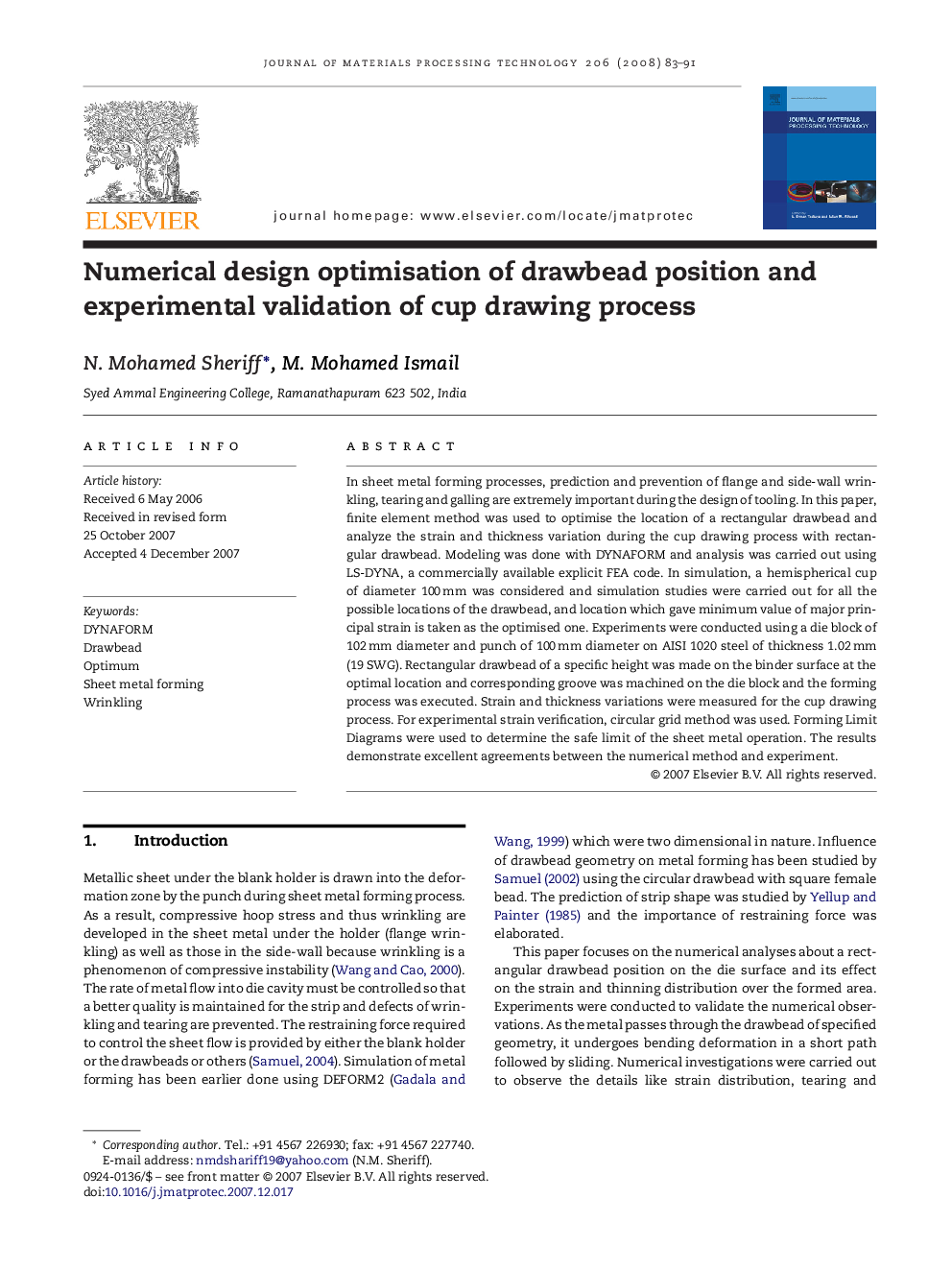| Article ID | Journal | Published Year | Pages | File Type |
|---|---|---|---|---|
| 791647 | Journal of Materials Processing Technology | 2008 | 9 Pages |
In sheet metal forming processes, prediction and prevention of flange and side-wall wrinkling, tearing and galling are extremely important during the design of tooling. In this paper, finite element method was used to optimise the location of a rectangular drawbead and analyze the strain and thickness variation during the cup drawing process with rectangular drawbead. Modeling was done with DYNAFORM and analysis was carried out using LS-DYNA, a commercially available explicit FEA code. In simulation, a hemispherical cup of diameter 100 mm was considered and simulation studies were carried out for all the possible locations of the drawbead, and location which gave minimum value of major principal strain is taken as the optimised one. Experiments were conducted using a die block of 102 mm diameter and punch of 100 mm diameter on AISI 1020 steel of thickness 1.02 mm (19 SWG). Rectangular drawbead of a specific height was made on the binder surface at the optimal location and corresponding groove was machined on the die block and the forming process was executed. Strain and thickness variations were measured for the cup drawing process. For experimental strain verification, circular grid method was used. Forming Limit Diagrams were used to determine the safe limit of the sheet metal operation. The results demonstrate excellent agreements between the numerical method and experiment.
